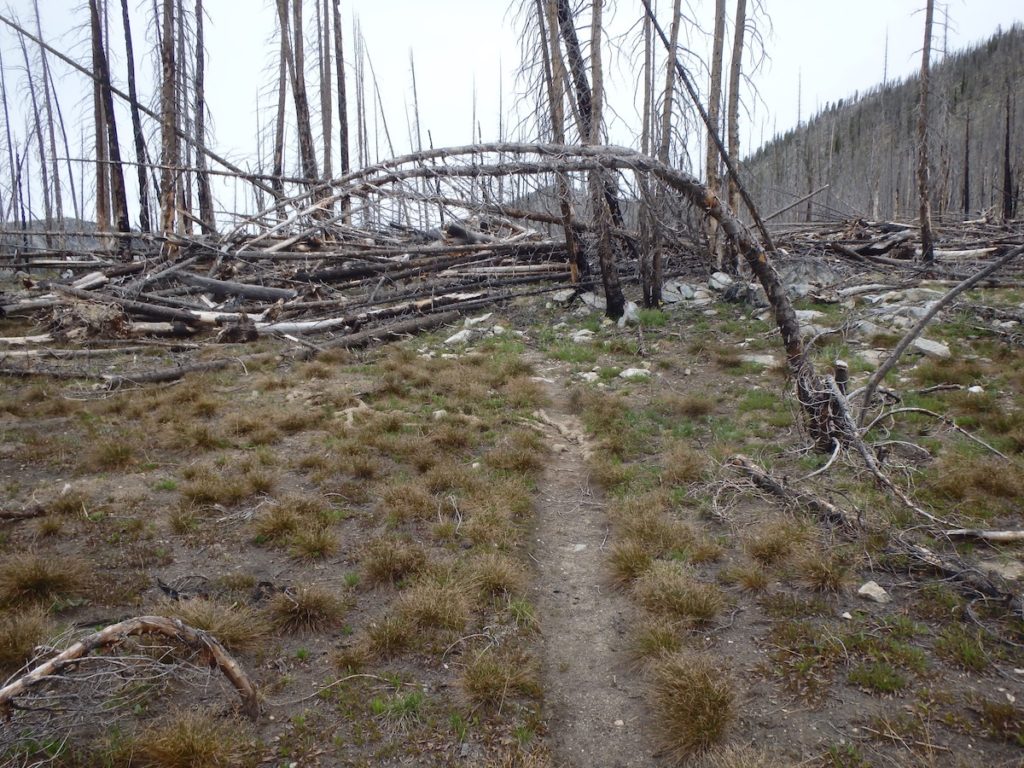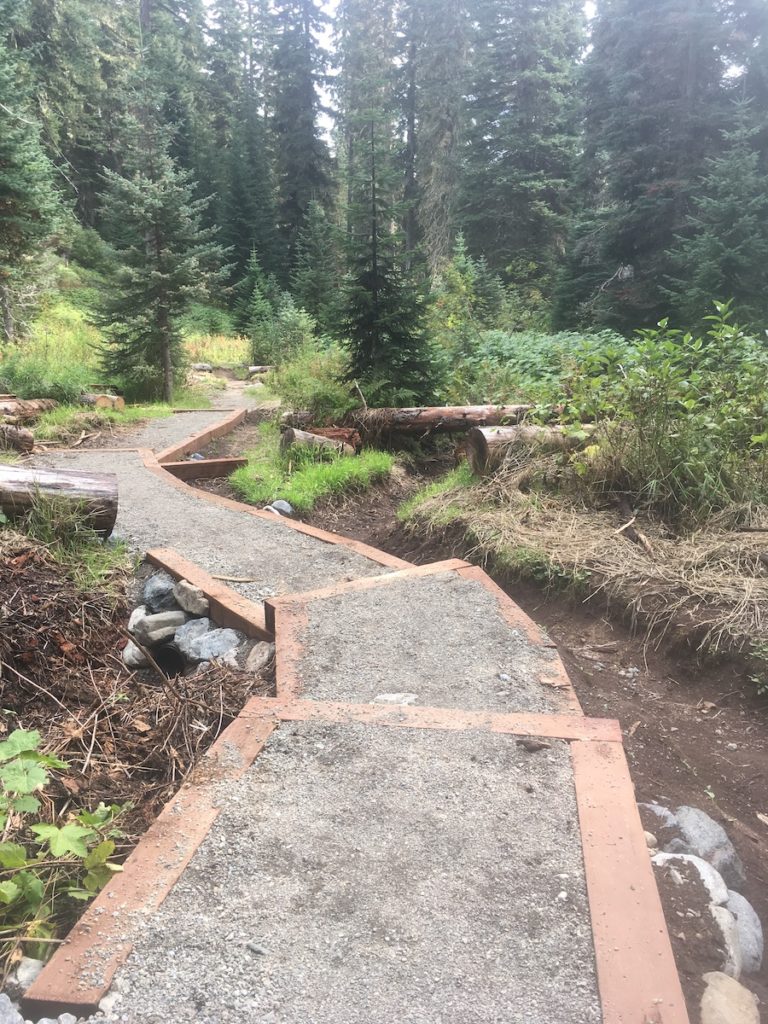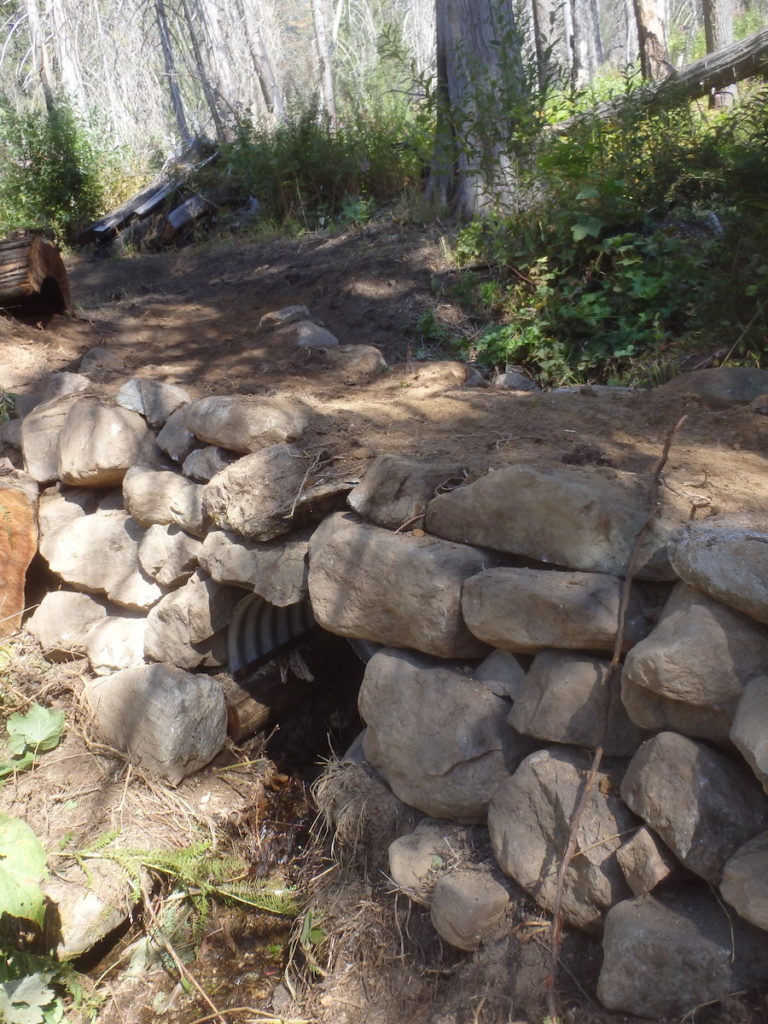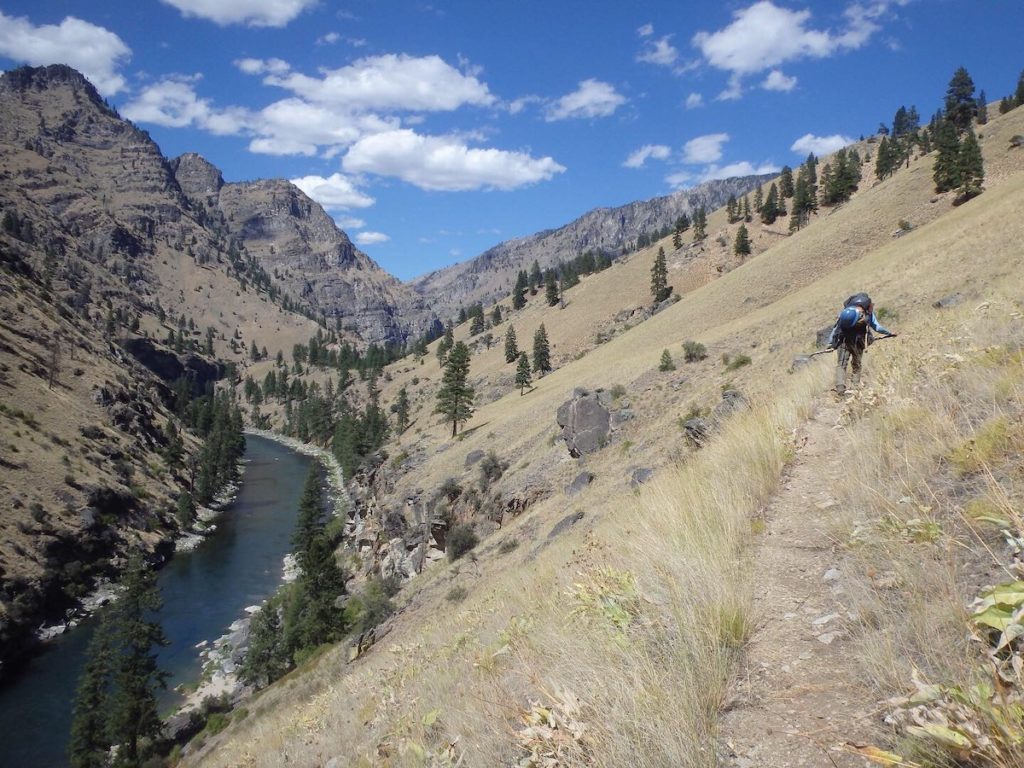We spend time on trails of many different types, but it’s easy to not think about the construction and maintenance of a trail until we encounter one with serious issues. Whether running, hiking, biking, skiing, or riding, trails make travel over rough terrain much easier and also help prevent ecosystem damage by concentrating impacts. Following a trail can make navigation easier and well-graded switchbacks make a steep climb a bit more pleasant. But when there are trees down, deep rocky trenches, thick brush, or a creek flowing right down the middle of a trail, a nice run can quickly turn into a slow arduous trek. Perhaps it is easy to ignore a well-built trail, but after something like seven summers working on trails across the Northwest, I can’t help but admire a beautifully constructed trail.

What even defines a trail? A trail can look very different depending on the location, terrain, and usage. And although they might look very different, a rocky trail through a seldom visited canyon still has plenty in common with a beautifully constructed trail through the alpine meadows of a National Park or even the old roadbed passing through thinned lodgepole next to town.
The first feature of a trail is the corridor. This is an area clear of brush or logs or rocks that you can move through easily. A trail open to stock ideally is cleared 10 or 12 feet high and 8 feet wide. Other trails only open to hikers don’t need as big of a corridor. The corridor is maintained by cutting fallen logs out of the trail and cutting back encroaching brush. Clearing the logs out of a trail is usually the highest priority for a trail crew and other maintenance waits for later in the season.
Next, the tread is the part of the trail that you run, walk, or ride on. It is hopefully a somewhat level surface that is easy to travel over, usually around 2 feet wide. High use areas may have wider tread and have big roots or rocks jutting up out of the tread from a high volume of traffic. Other areas that see very infrequent use may be narrow and become very sloped or even have vegetation growing right in the middle.

But what makes a good trail? Maybe the most important feature of a trail is drainage. This is less important in very dry locations but in most places, water causes more trail damage than anything else. You have probably seen trails that look more like a trench or a small creek than a nice surface for traveling. For starters, the trail is hopefully not built in marshy river bottoms or other wet areas and is instead a little bit up on a hill slope. Then the tread is usually sloped a tiny bit to the downhill side (out sloped) to allow water to run off. But of course, this doesn’t always happen perfectly. Frequently trails have drains dug to channel spring meltwater off the trail. And to prevent these drains from simply washing out, a wood or rock water bar is often placed in the tread at an angle. Unfortunately, these drains don’t clear themselves of debris and sediment, so this is what your local trail crew probably spends quite a bit of time maintaining.

One of the things I really like about working on trails is the variety in the work. Some frequently traveled trails have additional structures such as a bridge or puncheon. While a bridge may cross something like a creek, a puncheon is lower to the ground and might cross a swampy area. Another solution is to build a turnpike. A turnpike has wood or rock along the edges of the trail to raise up the tread and retain the material used in the middle as fill. This fill material is rock, gravel, and sand to drain water easily. Often times this looks like a nice sandy or gravelly trail with timbers along the sides. Other areas may require rock walls or culverts. Some trails even require blasting bedrock to make a safe surface for bikes or stock.

Now that you hopefully have a couple more things to look for at your local trail, you also know that a trail doesn’t maintain itself. Things like staying on the trail – not cutting switchbacks or going around mud holes – can help prevent erosion. And even some well-intentioned things like building small cairns can be detrimental (leading others astray, degrading the Wilderness experience). But if you want to get more involved there are likely organizations that you can volunteer with on your nearby trails. Also, funding and support is important for nonprofits and government agencies to hire experienced staff to knock out long days of gnarly work. Trails are very important for access to wild spaces and allow us to run through rugged landscapes. May you see many trail miles and not too many soggy, rocky, or brushy ones!















2 Responses
Thank you for this! I sit on the board for my local trails network, and there is always maintenance to be done. I know that our users enjoy and love out trails, but we don’t always understand how our habits of (mis)use add to the workload and financial stress of trail managers. The more we understand the fundamental build of trails, the more intentional we can be about our use.
What a great article! Working outdoors on the trails all summer sounds unreal 🙂 Thank you for all you do!